Field-Use XERJ Series Abrasion-Resistant Flexible Power Cable
Field-Use XERJ Series Abrasion-Resistant Flexible Power Cable
Overview
XERJ series special soft power cable is divided into power cable and control power cable, power cable is suitable for power transmission; control power cable is suitable for instrumentation and control of electrical equipment.
The power supply cable is suitable for power transmission; the control power cable is suitable for the control of instrumentation and electrical equipment. The product adopts cross-linked soft material insulation, special wear-resistant elastomer material sheath, with excellent electrical performance, anti-aging, low temperature (-45 ℃) oil, moisture and acid and alkali erosion resistance and other characteristics. The cable has soft structure, high mechanical strength, high resistance, tear resistance, and is suitable for energy and information transmission of power and electrical equipment under special environment in the field.
Executive standard
Q/XTHY 05-2022 Special soft power cable
Characteristics
Rated working voltage: 450/750V and below.
Cable working temperature:-45℃~+90℃.
Minimum bending radius of the cable when fixed laying: 4 times of the outer diameter of the cable.
Model and Name
XERJ:Cross-linked flexible material insulation, special abrasion-resistant elastomer sheathed special flexible power cable
XERJP:Cross-linked flexible material insulation, tinned copper wire shielding, special wear-resistant elastomer sheath special soft power cable
XERJ80:Cross-linked flexible material insulation, special wear-resistant elastomer jacket, tinned copper wire armored special soft power cable
Cable specification
Table 1 Power supply cable
| Core No. | Nominal Cross Section mm2 |
| 1 | 1.5~300 |
| 2 | 1.5~95 |
| 3 | 1.5~120 |
| 4 | 1.5~120 |
| 3+1 | 2.5~120 |
Table 2 Control Cable
| Core No. | Nominal Cross Section mm2 |
| 3,4 | 0.35 |
| 2~37 | 0.50 |
| 2~37 | 0.75 |
| 2~30 | 1.0 |
| 2~27 | 1.5 |
| 2~19 | 2.5 |
Main Properties
Conductor structure and conductor DC resistance are shown in Table 3
| Nominal Cross Section mm2 |
Cable Structure n/mm |
20℃ Max.Conductor Resistance Ω/KM |
| 0.35 | 20/0.15 | 57.8 |
| 0.50 | 16/0.20 | 40.1 |
| 0.75 | 24/0.20 | 26.7 |
| 1.0 | 32/0.20 | 20.0 |
| 1.5 | 48/0.20 | 13.7 |
| 2.5 | 77/0.20 | 8.21 |
| 4.0 | 126/0.20 | 5.09 |
| 6 | 189/0.20 | 3.39 |
| 10 | 324/0.20 | 1.95 |
| 16 | 513/0.20 | 1.24 |
| 25 | 798/0.20 | 0.795 |
| 35 | 1121/0.20 | 0.565 |
| 50 | 1593/0.20 | 0.393 |
| 70 | 560/0.40 | 0.277 |
| 95 | 756/0.40 | 0.210 |
| 120 | 960/0.40 | 0.164 |
| 150 | 1197/0.40 | 0.132 |
| 185 | 1444/0.40 | 0.108 |
| 240 | 1960/0.40 | 0.0817 |
| 300 | 2394/0.40 | 0.0654 |
Shielded power cables: braiding density not less than 85%.
Armored power cables: braiding density not less than 85%.
Finished product voltage withstand test: withstand frequency 3000V/5min high-voltage test does not break through.
Sheath low-temperature bending test: (-45±2)℃ conditions without cracking;
Thermal shock test: (135±2)℃ conditions without cracking.
Flame retardant performance: in line with GB/T18380.12-2008 requirements.
Product structure size, weight
……omit,
for more information,pls contact us

RELATED PRODUCTS
GET IN TOUCH
We look forward to serving you! Our team will get back to you promptly.

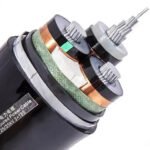 Power Cable
Power Cable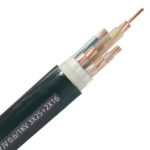 General Power Cable
General Power Cable XLPE insulated power cable for rated voltage up to and including 35kV
XLPE insulated power cable for rated voltage up to and including 35kV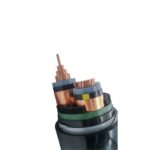 XLPE insulated anti-termite and anti-rat environmental power cable for rated voltage up to & including 35kV
XLPE insulated anti-termite and anti-rat environmental power cable for rated voltage up to & including 35kV XLPE insulated waterproof power cable for rated voltage up to and including 35KV
XLPE insulated waterproof power cable for rated voltage up to and including 35KV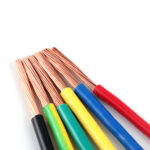 Silicon rubber insulated power cable
Silicon rubber insulated power cable Fluoroplastics insulated heat resistant power cable
Fluoroplastics insulated heat resistant power cable NBR Flexible Power Cable
NBR Flexible Power Cable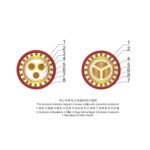 Power cable with concentric conductor
Power cable with concentric conductor Special cable for frequency converter
Special cable for frequency converter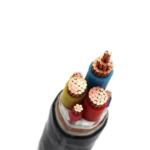 Metal shielded power cable
Metal shielded power cable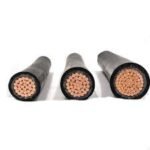 Oxygen barrier and high flame retardant power cable
Oxygen barrier and high flame retardant power cable EPR insulated power cable for rated voltage up to and including 35kV
EPR insulated power cable for rated voltage up to and including 35kV Plastic insulated and sheathed branch cable of rated voltage up to and including 0.6/1kV
Plastic insulated and sheathed branch cable of rated voltage up to and including 0.6/1kV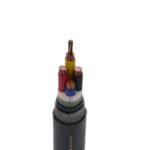 0.6/1kV PVC insulated power cable
0.6/1kV PVC insulated power cable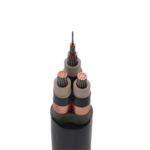 0.6/1kV polyolefin insulated power cable
0.6/1kV polyolefin insulated power cable 0.6/1kV flame retardant B1 class power cable
0.6/1kV flame retardant B1 class power cable 0.6/1kV flame retardant B2 class power cable
0.6/1kV flame retardant B2 class power cable Aluminium Alloy Power Cable
Aluminium Alloy Power Cable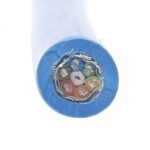 Special Explosion Proof Cable
Special Explosion Proof Cable 8.7/15KV And Below Medium Voltage Special Explosion-Proof Cable
8.7/15KV And Below Medium Voltage Special Explosion-Proof Cable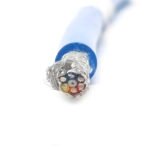 450/750V and below Special Explosion-Proof Control cable
450/750V and below Special Explosion-Proof Control cable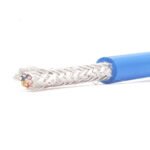 300/500V Special Explosion-Proof Computer Cable
300/500V Special Explosion-Proof Computer Cable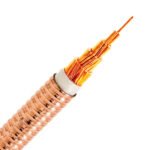 Mineral Insulated Fire-proof Cable
Mineral Insulated Fire-proof Cable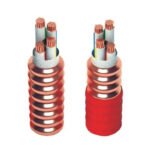 Metal sheathed inorganic mineral insulated cable
Metal sheathed inorganic mineral insulated cable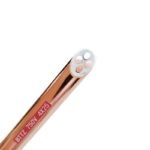 Copper core mineral insulated flexible fire proof cable for wiring rated voltage upto and including 0.6/1kV
Copper core mineral insulated flexible fire proof cable for wiring rated voltage upto and including 0.6/1kV Industrial Cable & Civil Cable
Industrial Cable & Civil Cable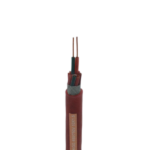 Industrial Control Cable
Industrial Control Cable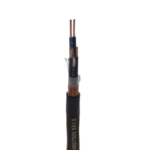 XLPE insulated and sheathed control cable
XLPE insulated and sheathed control cable PVC insulated and sheathed control cable
PVC insulated and sheathed control cable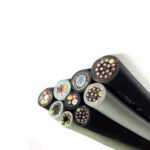 Polyolefin insulated and sheathed control cable
Polyolefin insulated and sheathed control cable NBR insulated and sheathed flexible control cable
NBR insulated and sheathed flexible control cable Thermoplastic elastomer insulated and sheathed flexible control cable
Thermoplastic elastomer insulated and sheathed flexible control cable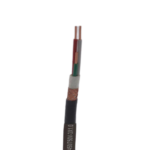 Fluoroplastic insulated high temperature resistant control cable
Fluoroplastic insulated high temperature resistant control cable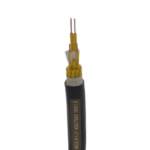 450/750V flame retardant B1 level control cable
450/750V flame retardant B1 level control cable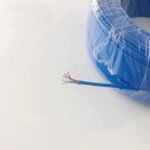 Thermocouple Compensation Cable
Thermocouple Compensation Cable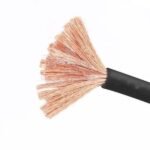 Rubber Sheathed Cable for General Purpose
Rubber Sheathed Cable for General Purpose Rubber insulated flexible cord and cable
Rubber insulated flexible cord and cable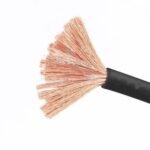 Welding Cable
Welding Cable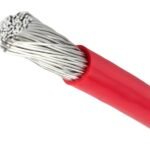 Flexible cables & cords for electric motors leads
Flexible cables & cords for electric motors leads 125℃ & 150℃ Flexible Cable(Wire) for Motor Winding Connection
125℃ & 150℃ Flexible Cable(Wire) for Motor Winding Connection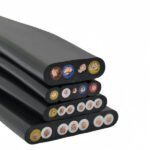 Movable Flat Cable
Movable Flat Cable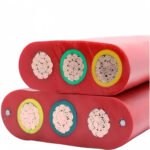 Silicon rubber Insulated flat cable
Silicon rubber Insulated flat cable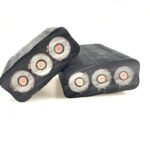 EPR Insulated flat cable
EPR Insulated flat cable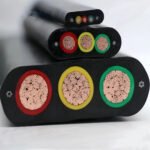 NBR insulated flat cable
NBR insulated flat cable Heat-resistent Fire-proof Cable (Fire Protection Type)
Heat-resistent Fire-proof Cable (Fire Protection Type)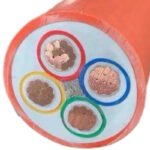 Fireproof cable for high temperature uses
Fireproof cable for high temperature uses Automatic Control Temperature Heating Cable
Automatic Control Temperature Heating Cable Automatic-control-temperature Heating Cable
Automatic-control-temperature Heating Cable Low temperature, Middle temperature, High temperature series
Low temperature, Middle temperature, High temperature series The series of excessively-long cable
The series of excessively-long cable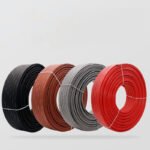 Maintaining temperature for duct
Maintaining temperature for duct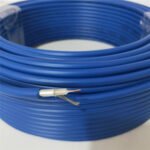 The Comprehensive Application of Automatically-Restricted-Temperature Electric-Heating Belt into the Household Electric Equipment
The Comprehensive Application of Automatically-Restricted-Temperature Electric-Heating Belt into the Household Electric Equipment The Component of the explosion-proof heating belt andaccessories of installation
The Component of the explosion-proof heating belt andaccessories of installation Installation Cable Residential Wire
Installation Cable Residential Wire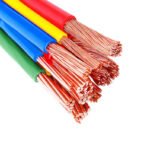 PVC insulated cable (wire)
PVC insulated cable (wire)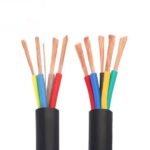 Low smoke halogen free flame retardant and environmental installation wire
Low smoke halogen free flame retardant and environmental installation wire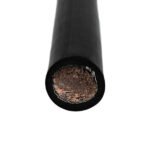 Cable for Railway Vehicle & Metro
Cable for Railway Vehicle & Metro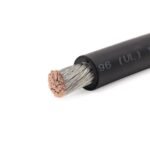 EPR rubber insulated cable for railway vehicles & metro
EPR rubber insulated cable for railway vehicles & metro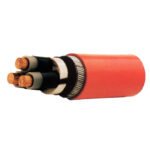 XLPO insulated cable for railway vehicies & metro
XLPO insulated cable for railway vehicies & metro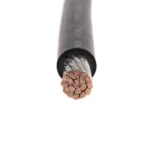 NR+SBR insulated cable for railway vehicles & metro
NR+SBR insulated cable for railway vehicles & metro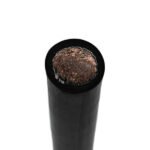 CSP rubber insulated cable for raiiway vehicles
CSP rubber insulated cable for raiiway vehicles Communication Cable
Communication Cable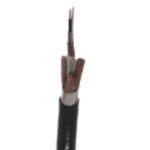 Instrumentation Cable
Instrumentation Cable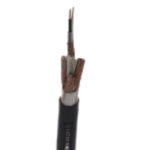 PE or XLPE insulated computer cable
PE or XLPE insulated computer cable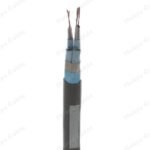 PVC insulated computer cable
PVC insulated computer cable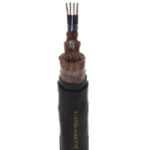 Fluoroplastics insulated computer cable
Fluoroplastics insulated computer cable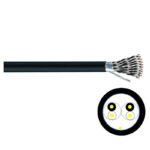 PAS/BS5308 Part1 Type 1&2
PAS/BS5308 Part1 Type 1&2 PAS/BS5308 Part2 Type 1&2
PAS/BS5308 Part2 Type 1&2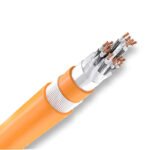 Fire Resistant Instrumention Cable
Fire Resistant Instrumention Cable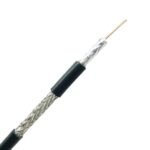 Radio Frequency Cable
Radio Frequency Cable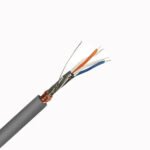 EIA RS485 RS232/RS422
EIA RS485 RS232/RS422 Bus Cable
Bus Cable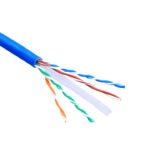 LAN/ Network Cable
LAN/ Network Cable Fiber Optic Cable
Fiber Optic Cable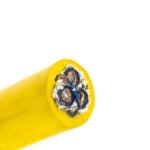 Mining Cable
Mining Cable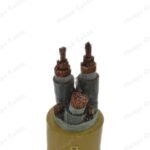 Flexible Coalcutter Cables for Rated Voltage up to and Including 1.9/3.3kV
Flexible Coalcutter Cables for Rated Voltage up to and Including 1.9/3.3kV Flexible Strengthened Coalcutter Cables With Monitoring Core and Screen for Rated Voltage of 0.66/1.14kV
Flexible Strengthened Coalcutter Cables With Monitoring Core and Screen for Rated Voltage of 0.66/1.14kV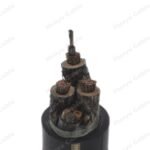 Flexible Coalcutter Cables With Metallic Screen For rated Voltage up to and Including 1.9/3.3kV
Flexible Coalcutter Cables With Metallic Screen For rated Voltage up to and Including 1.9/3.3kV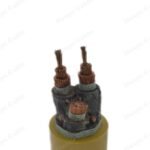 Flexible Rubber-Sheathed Cables for Rated Voltage up to and Including 0.66/1.14kV
Flexible Rubber-Sheathed Cables for Rated Voltage up to and Including 0.66/1.14kV LSZH Flexible Rubber-Sheathed Cables for Rated Voltage up to and including 0.66/1.14kV
LSZH Flexible Rubber-Sheathed Cables for Rated Voltage up to and including 0.66/1.14kV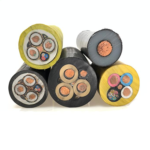 Drill Cables with Rated Voltage of 0.3/0.5kV for Mining Purpose
Drill Cables with Rated Voltage of 0.3/0.5kV for Mining Purpose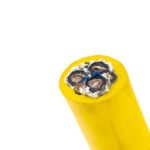 Flexible Rubber-Sheathed Light-Duty Cables for Mining Purpose
Flexible Rubber-Sheathed Light-Duty Cables for Mining Purpose PVC Insulated Flame Retardant Mining Power Cable
PVC Insulated Flame Retardant Mining Power Cable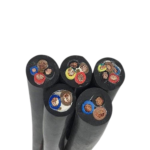 XLPE Insulated Mining Power Cable
XLPE Insulated Mining Power Cable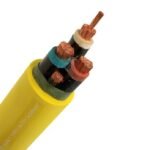 Flame-Retardant Mining Control Cable
Flame-Retardant Mining Control Cable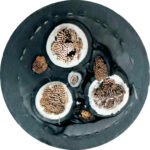 Reeling Cable &Trailing Cable
Reeling Cable &Trailing Cable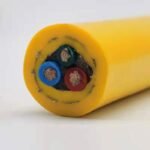 Low voltage reeling cable
Low voltage reeling cable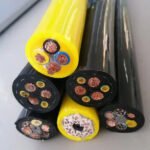 Spreader rolling cable
Spreader rolling cable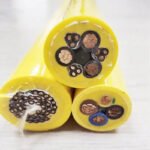 Spreader basket cable
Spreader basket cable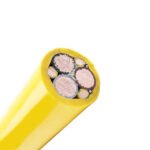 Shipboard Cable & Marine Engineering
Shipboard Cable & Marine Engineering Shipyard Cable & Marine Cable & Offshore Cable
Shipyard Cable & Marine Cable & Offshore Cable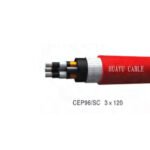 EPR insulated shipboard power cable for rated voltage from 3.6/6 to 18/30kV
EPR insulated shipboard power cable for rated voltage from 3.6/6 to 18/30kV XLPE insulated shipboard power cable for rated voltage from 3.6/6 to 18/30kV
XLPE insulated shipboard power cable for rated voltage from 3.6/6 to 18/30kV EPR insulated shipboard power cable rated voltage up to and including 0.6/1kV
EPR insulated shipboard power cable rated voltage up to and including 0.6/1kV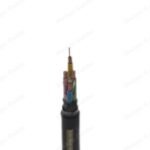 EPR insulated Fire-Resisting shipboard power cable rated voltage up to and including 0.6/1kV
EPR insulated Fire-Resisting shipboard power cable rated voltage up to and including 0.6/1kV XLPE insulated shipboard power cable for rated voltage up to and including 0.6/1kV
XLPE insulated shipboard power cable for rated voltage up to and including 0.6/1kV XLPE insulated shipboard Control cable rated voltage up to and including 250V
XLPE insulated shipboard Control cable rated voltage up to and including 250V XLPE insulated Fire-Resisting shipboard Control cable rated voltage up to and including 250V
XLPE insulated Fire-Resisting shipboard Control cable rated voltage up to and including 250V EPR insulated shipboard Control cable rated voltage up to and including 250V
EPR insulated shipboard Control cable rated voltage up to and including 250V EPR insulated Fire-Resisting shipboard Control cable rated votage up to and including 250V
EPR insulated Fire-Resisting shipboard Control cable rated votage up to and including 250V XLPE insulated shipboard telecommunication cable for rated voltage up to and including 250V
XLPE insulated shipboard telecommunication cable for rated voltage up to and including 250V XLPE insulated Fire-Resisting shipboard telecommunication cable for rated voltage up to and including 250V
XLPE insulated Fire-Resisting shipboard telecommunication cable for rated voltage up to and including 250V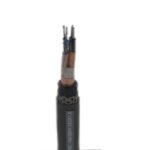 EPR insulated shipboard telecommunication cable for rated voltage up to and including 250V
EPR insulated shipboard telecommunication cable for rated voltage up to and including 250V EPR insulated Fire-Resisting shipboard telecommunication cable for rated voltage up to and including 250V
EPR insulated Fire-Resisting shipboard telecommunication cable for rated voltage up to and including 250V Naval Ship Cable
Naval Ship Cable XLPE insulated naval ship power cable for rated voltage up to and including 0.6/1kV
XLPE insulated naval ship power cable for rated voltage up to and including 0.6/1kV XLPE insulated naval ship fire-resistance power cable for rated Voltage up to and including 0.6/1kV
XLPE insulated naval ship fire-resistance power cable for rated Voltage up to and including 0.6/1kV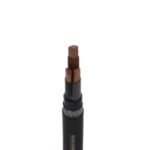 EPR insulated naval ship power cable for rated voltage up to and including 0.6/1kV
EPR insulated naval ship power cable for rated voltage up to and including 0.6/1kV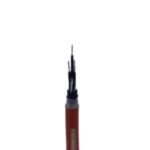 XLPE insulated naval ship control cable for rated voltage up to and including 600V
XLPE insulated naval ship control cable for rated voltage up to and including 600V EPR insulated naval ship control cable for rated voltage up to and including 600V
EPR insulated naval ship control cable for rated voltage up to and including 600V XLPE insulated naval ship telecommunication cable for rated Voltage up to and including 300V
XLPE insulated naval ship telecommunication cable for rated Voltage up to and including 300V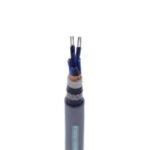 EPR insulated naval ship telecommunication cable for rated Voltage up to and including 300V
EPR insulated naval ship telecommunication cable for rated Voltage up to and including 300V Low-smoke halogen-free flame-retardant light thin-walled telecommunication cable for naval ships
Low-smoke halogen-free flame-retardant light thin-walled telecommunication cable for naval ships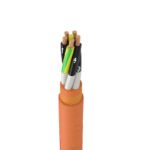 Watertight Power Cable for Naval Ship
Watertight Power Cable for Naval Ship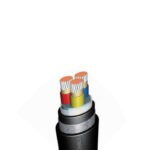 XLPE insulated naval ship water-tightness power cable for rated voltage up and including 0.6/1kV
XLPE insulated naval ship water-tightness power cable for rated voltage up and including 0.6/1kV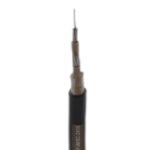 EPR insulated naval ship water-tightness power cable for rated voltage up to and including 0.6/1kV
EPR insulated naval ship water-tightness power cable for rated voltage up to and including 0.6/1kV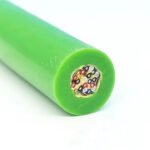 XLPE insulated naval ship water-tightness control cable for rated voltage up to and including 600V
XLPE insulated naval ship water-tightness control cable for rated voltage up to and including 600V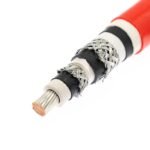 XLPE insulated naval ship water-tightness fire-resistance control cable for rated voltage up to and including 600V
XLPE insulated naval ship water-tightness fire-resistance control cable for rated voltage up to and including 600V EPR insulated naval ship water-tightness control cable for rated voltage up to and including 600V
EPR insulated naval ship water-tightness control cable for rated voltage up to and including 600V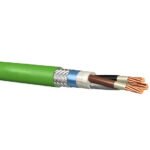 EPR insulated naval ship water-tightness fire-resistance control cable for rated voltage up to and including 600V
EPR insulated naval ship water-tightness fire-resistance control cable for rated voltage up to and including 600V XLPE insulated naval ship water-tightness fire-resistant telecommunication cable for rated voltage up to and including 300V
XLPE insulated naval ship water-tightness fire-resistant telecommunication cable for rated voltage up to and including 300V EPR insulated naval ship water-tightness telecommunication cable for rated voltage up to and including 300V
EPR insulated naval ship water-tightness telecommunication cable for rated voltage up to and including 300V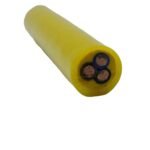 EPR insulated naval ship water-tightness fire-resistant telecommunication cable for rated voltage and including 300V
EPR insulated naval ship water-tightness fire-resistant telecommunication cable for rated voltage and including 300V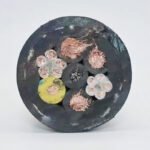 Low smoke shore connection cable for naval ships
Low smoke shore connection cable for naval ships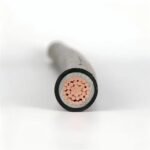 Rubber cable for underwater sound transducer
Rubber cable for underwater sound transducer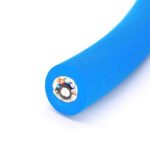 Aramid fiber strength signal cable for naval ships
Aramid fiber strength signal cable for naval ships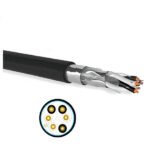 Low smoke digital communication LAN cable
Low smoke digital communication LAN cable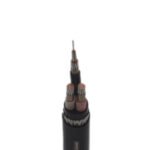 LV Power Cable for Oil Platform
LV Power Cable for Oil Platform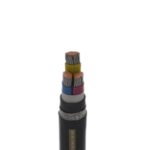 Power cable for offshore oil platform with rated voltage up to and including 0.6/1 kV
Power cable for offshore oil platform with rated voltage up to and including 0.6/1 kV Fire-Resisting power cable for offshore oil platform with rated voltage up to and including 0.6/1kV
Fire-Resisting power cable for offshore oil platform with rated voltage up to and including 0.6/1kV Telecommunication cable for offshore oil platform with rated voltage up to and including 150/250V
Telecommunication cable for offshore oil platform with rated voltage up to and including 150/250V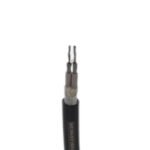 EPR insulated power cable for offshore oil platform with rated voltage from 3.6/6 to 18/30kV
EPR insulated power cable for offshore oil platform with rated voltage from 3.6/6 to 18/30kV New Energy Cable
New Energy Cable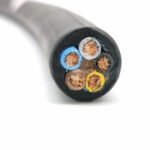 Wind Power Generation Cable
Wind Power Generation Cable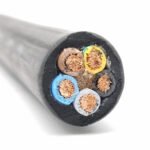 Wind Power mobile cold-proof anti-reversing Control cable
Wind Power mobile cold-proof anti-reversing Control cable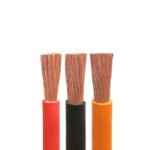 Solar/Photovoltaic Cable
Solar/Photovoltaic Cable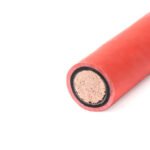 Solar Cable TUV 2PFG 1169
Solar Cable TUV 2PFG 1169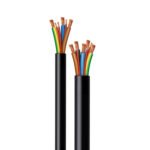 EV Charging Cable EN50620
EV Charging Cable EN50620 EV Cable H05BZ5-F & H07BZ5-F
EV Cable H05BZ5-F & H07BZ5-F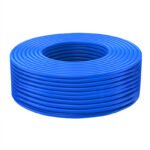 Special Cable
Special Cable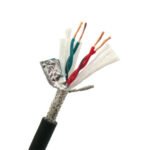 Special Industrial Cable
Special Industrial Cable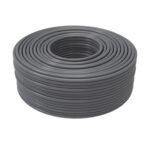 XT Series Phase-Stable Low-Loss Coaxial Cable
XT Series Phase-Stable Low-Loss Coaxial Cable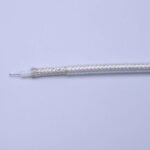 SFF Series Solid PTFE Insulated RF Coaxial Cable
SFF Series Solid PTFE Insulated RF Coaxial Cable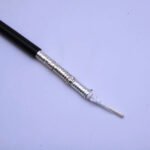 SYV Series Solid PE Insulated RF Coaxial Cable
SYV Series Solid PE Insulated RF Coaxial Cable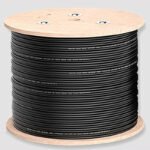 Field-Use XTFUP-1004x2x24A Type Special Ethernet Cable
Field-Use XTFUP-1004x2x24A Type Special Ethernet Cable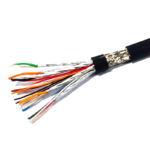 Field-Use DVl Video Transmission Cable
Field-Use DVl Video Transmission Cable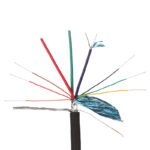 Field-Use VGA Video Transmission Cable
Field-Use VGA Video Transmission Cable Field-Use AGTRQ Series Special Flexible Wire
Field-Use AGTRQ Series Special Flexible Wire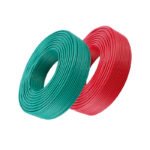 Field-Use XTRT Series Special Flexible Power Cable
Field-Use XTRT Series Special Flexible Power Cable Field-Use XERJ Series Abrasion-Resistant Flexible Power Cable
Field-Use XERJ Series Abrasion-Resistant Flexible Power Cable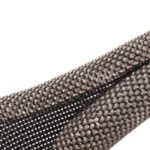 Metal Braid Series A: XTP Series EMl Shielding Sleeve
Metal Braid Series A: XTP Series EMl Shielding Sleeve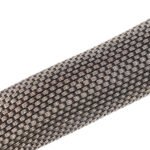 Metal Braid Series B: XTP Series Grounding Cable
Metal Braid Series B: XTP Series Grounding Cable Field-Use Computer Cable
Field-Use Computer Cable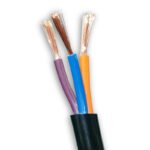 Field-Use Special Control Cable
Field-Use Special Control Cable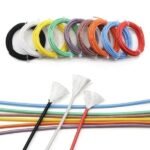 Aeropace/Aviation Cable
Aeropace/Aviation Cable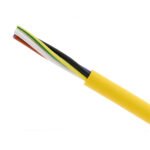 XTA1 Series High-Performance Transmission wire for Aerospace
XTA1 Series High-Performance Transmission wire for Aerospace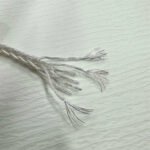 XTA2 Series High-Performance Transmission wire for aviation
XTA2 Series High-Performance Transmission wire for aviation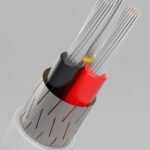 XTA3 Series High-Performance Transmission wire for aviation
XTA3 Series High-Performance Transmission wire for aviation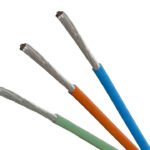 XTAX Series High-Performance Ultra-Flexible Transmission wire for aviation
XTAX Series High-Performance Ultra-Flexible Transmission wire for aviation XTE Series High-Temperature Resistant Wire for aviation
XTE Series High-Temperature Resistant Wire for aviation XTER Series High-Temperature Resistant Wire for aviation
XTER Series High-Temperature Resistant Wire for aviation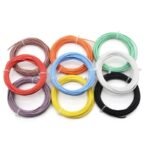 XTEX Series High-Temperature Resistant Ultra-Flexible Wire for aviation
XTEX Series High-Temperature Resistant Ultra-Flexible Wire for aviation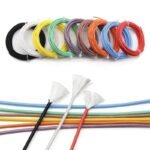 AFR-250 Series PTFE Film-Wrapped Insulated Installation Wire for aviation
AFR-250 Series PTFE Film-Wrapped Insulated Installation Wire for aviation AF Series Fluorinated Ethylene Propylene (FEP) Insulated Wire for aviation
AF Series Fluorinated Ethylene Propylene (FEP) Insulated Wire for aviation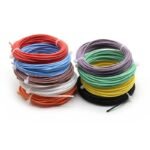 AF Series Soluble Polytetrafluoroethylene (PFA) Insulated Wire for aviation
AF Series Soluble Polytetrafluoroethylene (PFA) Insulated Wire for aviation XTCMC Large-Cross-Section Flexible Wire for aviation
XTCMC Large-Cross-Section Flexible Wire for aviation C55 Series Aerospace-Grade Crosslinked Ethylene-Tetrafluoroethylene Copolymer (XETFE) single-Layer Insulated Wire
C55 Series Aerospace-Grade Crosslinked Ethylene-Tetrafluoroethylene Copolymer (XETFE) single-Layer Insulated Wire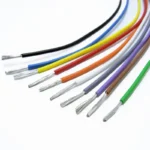 XETFE-Insulated 1553B Data Bus Cable for aerospace
XETFE-Insulated 1553B Data Bus Cable for aerospace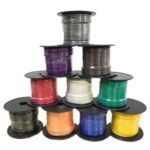 Model C772451664 Aerospace-Grade 1553B Data Bus Cable
Model C772451664 Aerospace-Grade 1553B Data Bus Cable Aviation-Grade 100Ω Special Category 5e Cable
Aviation-Grade 100Ω Special Category 5e Cable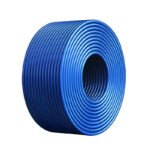 Model THSFPF 1x4x24A High-Temperature Resistant 100Ω Special Transmission Cable for aerospace
Model THSFPF 1x4x24A High-Temperature Resistant 100Ω Special Transmission Cable for aerospace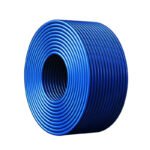 Model THWFPF-110 1x4x24A 1394b Data Bus Cable for aerospace
Model THWFPF-110 1x4x24A 1394b Data Bus Cable for aerospace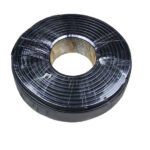 Model XT2490 &XT2539 LVDS Transmission Cable for aerospace
Model XT2490 &XT2539 LVDS Transmission Cable for aerospace